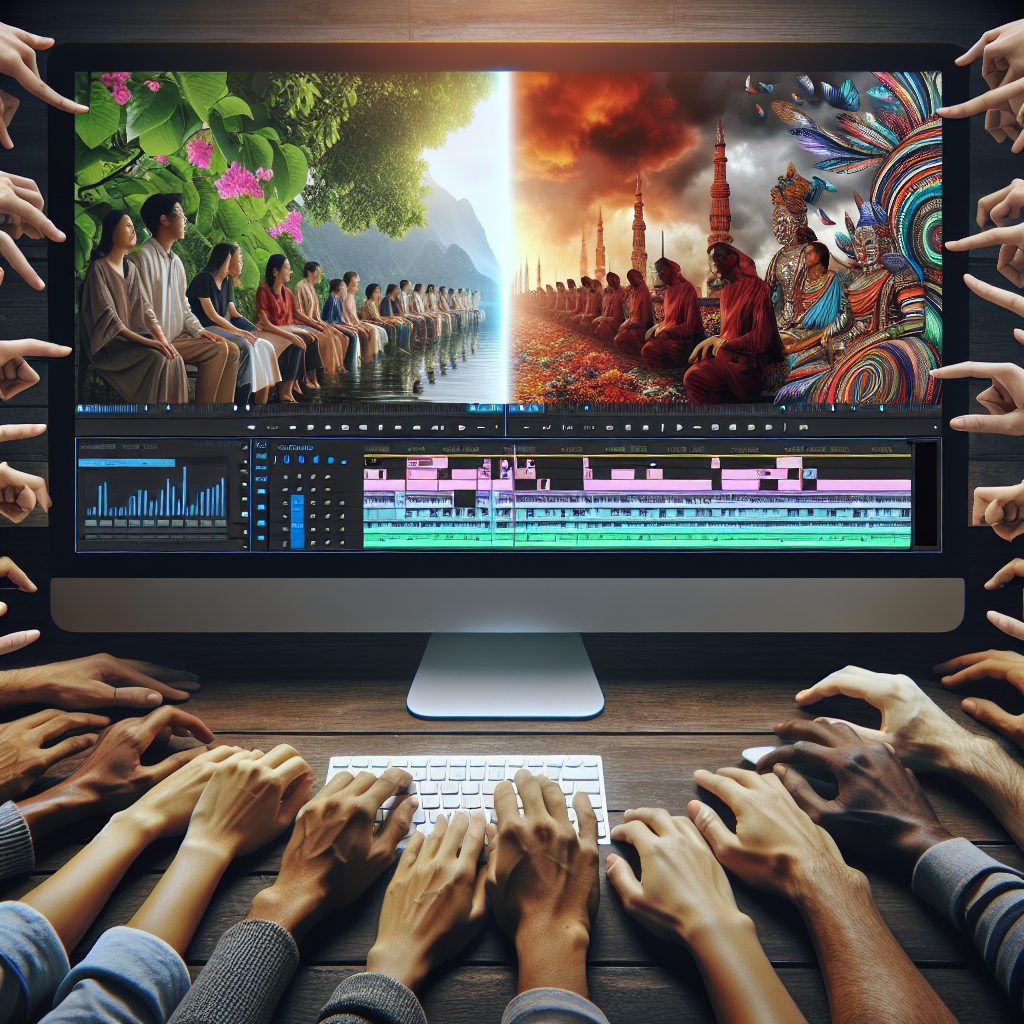In the realm of video editing, the art of crossfade continues to stand as an essential technique in crafting narrative flow and seamless transitions. Whether it’s a heart-rending moment in a dramatic film or a breathtaking time-lapse in a nature documentary, the crossfade creates a smooth transition that can profoundly influence the impact of a scene. Grasping the function and potential of this technique in video editing software can significantly enhance any video project.
Understanding Crossfade
Before delving into the software aspect, it’s crucial to understand what a crossfade is. A crossfade, also known as a dissolve, is a graduated transition between two video or audio clips. It is executed by gradually decreasing the opacity of the first clip while increasing that of the second. The result is a seemingly seamless blend from one scene to the next.
The Artistry of Crossfade in Cinematography
Historically, filmmakers have exploited the crossfade to suggest the passage of time, a change in location, or the connection between two separate elements. Its effect is both subliminal and psychological, subtly directing the viewer’s attention and influence interpretation. Deploying the crossfade can transform disjointed clips into fluid visual storytelling, fostering a captivating viewer experience.
Using Crossfade in Video Editing Software
The exact process of applying a crossfade can vary slightly between video editing software, but the fundamental method remains similar. Titles operating on non-linear editing systems like Adobe Premiere Pro, Final Cut Pro, and Davinci Resolve, all offer this feature.
In a typical video editing timeline, videos are placed on separate tracks. By having the ending of clip A coincide with the start of clip B, the overlap allows clip B to gradually come into view as clip A gradually fades out. The intensity and length of the fade effect can be adjusted to suit the aesthetics of your project.
Software-specific Techniques
Different software provides a variety of methods to accomplish crossfading. For instance, in Adobe Premiere Pro, users can take advantage of the “cross dissolve” effect available in the effects panel, which can be drag-dropped between the two clips in the timeline. Final Cut Pro X users can utilize transition effects like ‘Cross Dissolve’, ‘Fade to Color’, and ‘Blur’ to realize crossfades smoothly.
The Importance of Prudence
While crossfade holds a crucial spot in video editing, like every creative tool, it must be dosed with discernment. Overusing crossfade might make your video or film project appear dated or overly dramatic. Hence it’s fundamental to apply crossfade wisely, keeping your narrative’s tempo and the psychological impact on the viewers in mind.
Conclusion
The art of crossfade is crucial in video editing, offering a way to imbue projects with a sense of flow and thematic connection. Understanding its potential and learning how to apply it in video editing software can greatly enhance your storytelling capabilities. The apt use of crossfade can subtly guide viewers through your narrative, shaping their interpretation and ensuring a captivating viewing experience.
FAQs
1. What is a Crossfade in video editing?
The Crossfade, also known as dissolve, is a method of transitioning between two video or audio clips by gradually decreasing the opacity of the first clip while increasing that of the second.
2. How is a Crossfade used in Video Editing Software?
Crossfade can be applied in most non-linear editing software by overlapping clips on the timeline and using the appropriate transition effect.
3. Can Crossfade be overused?
Like any creative technique, overuse of crossfade can make a project seem dated or overly dramatic. It should be applied with consideration for the project’s narrative and aesthetics.
4. Which video editing software supports Crossfade effect?
Most professional video editing software, including Adobe Premiere Pro, Final Cut Pro, and Davinci Resolve, support the Crossfade effect.
5. Why is Crossfade important?
Crossfade is essential for creating smooth, seamless transitions between scenes, aiding in visual storytelling and guiding viewer interpretation.

